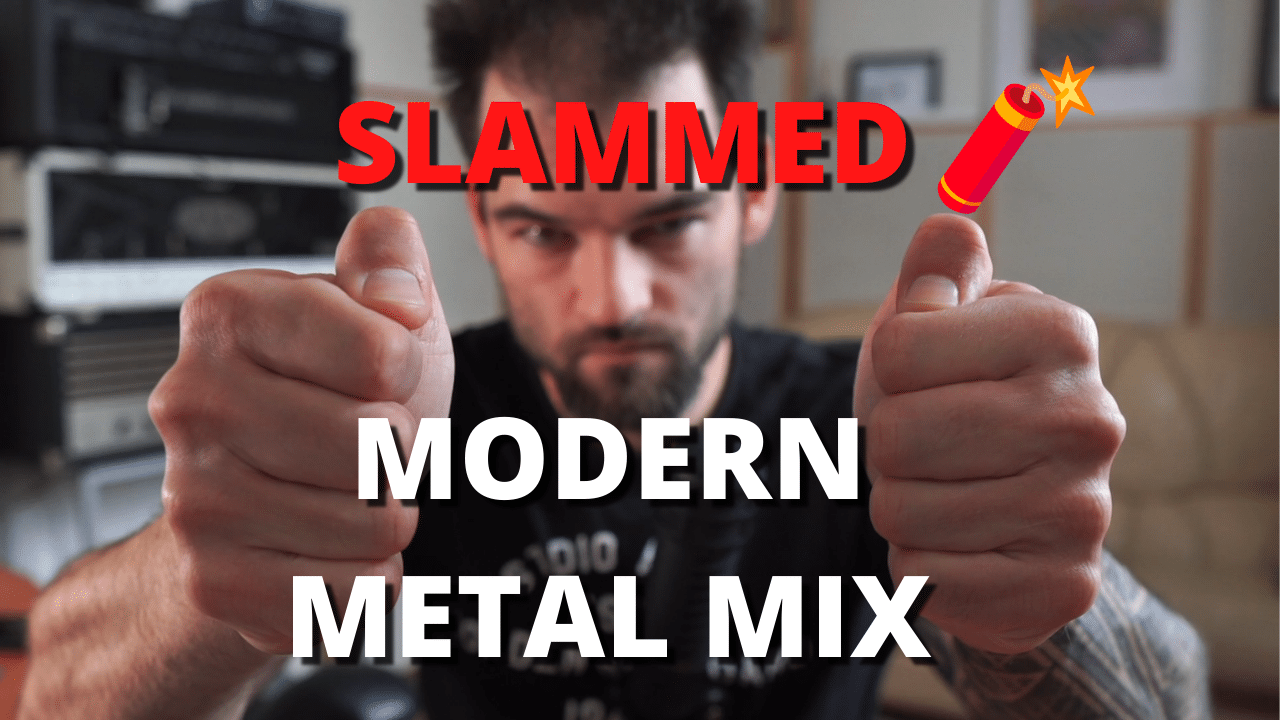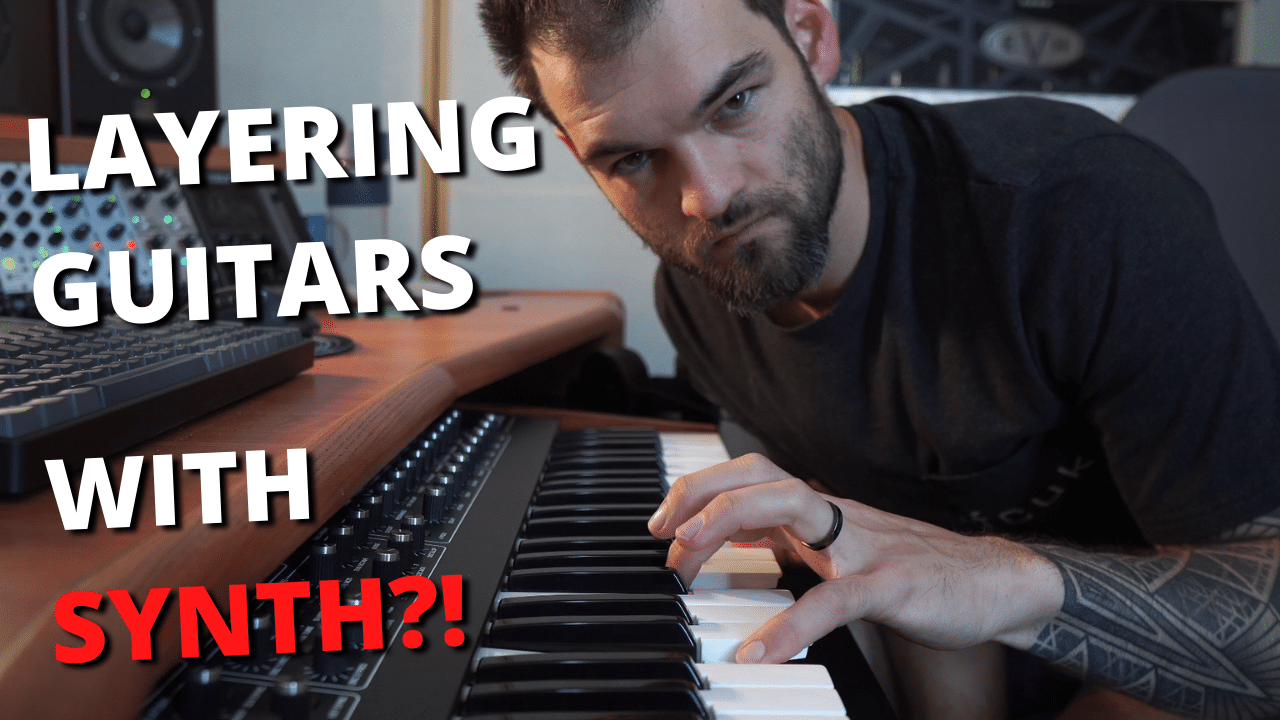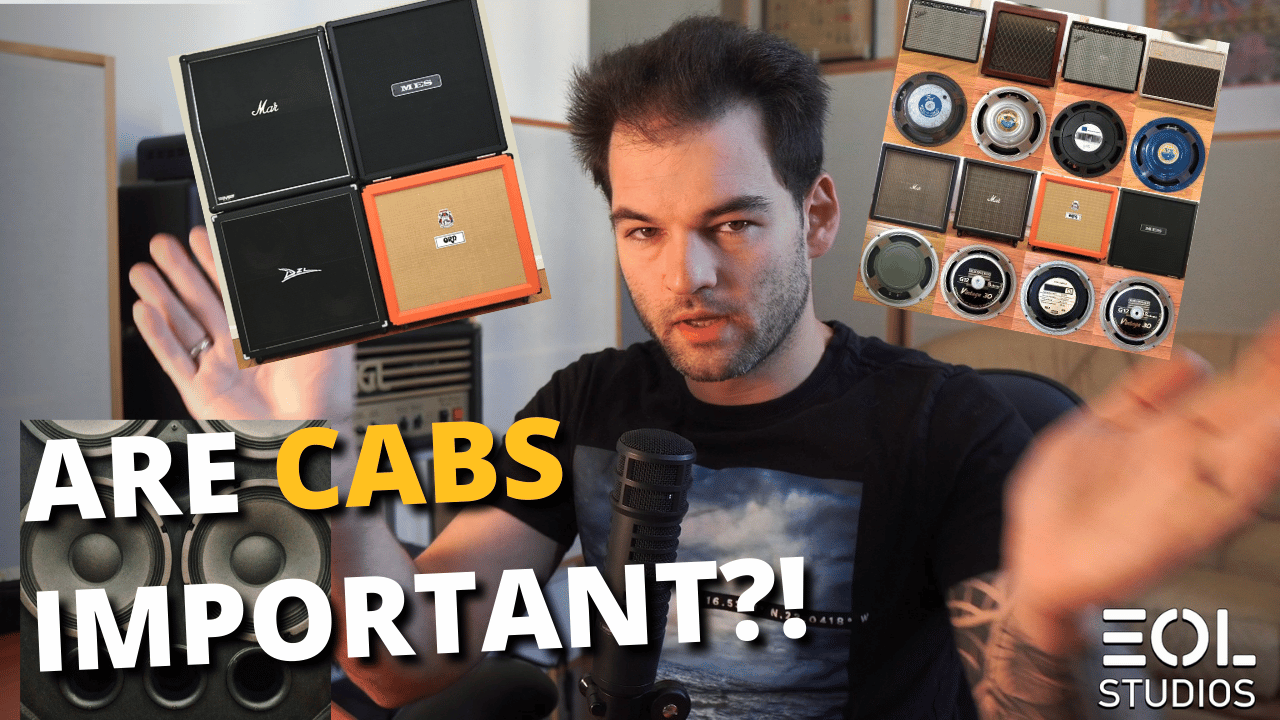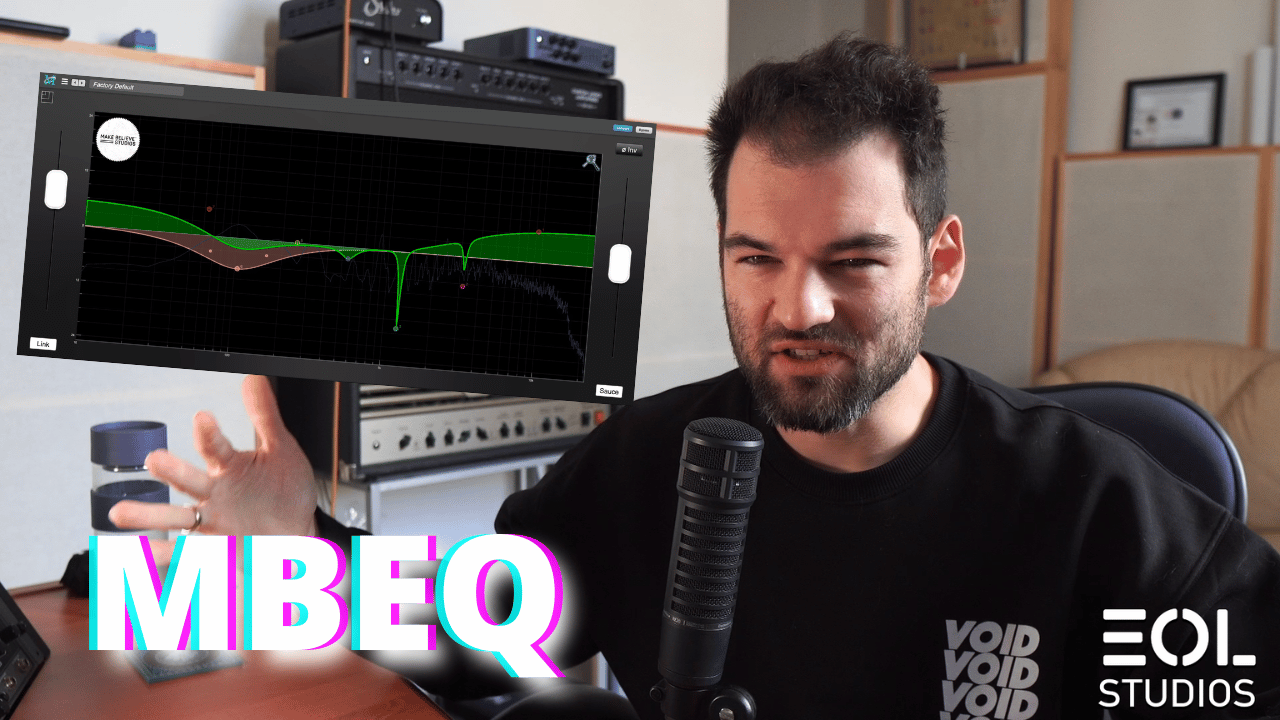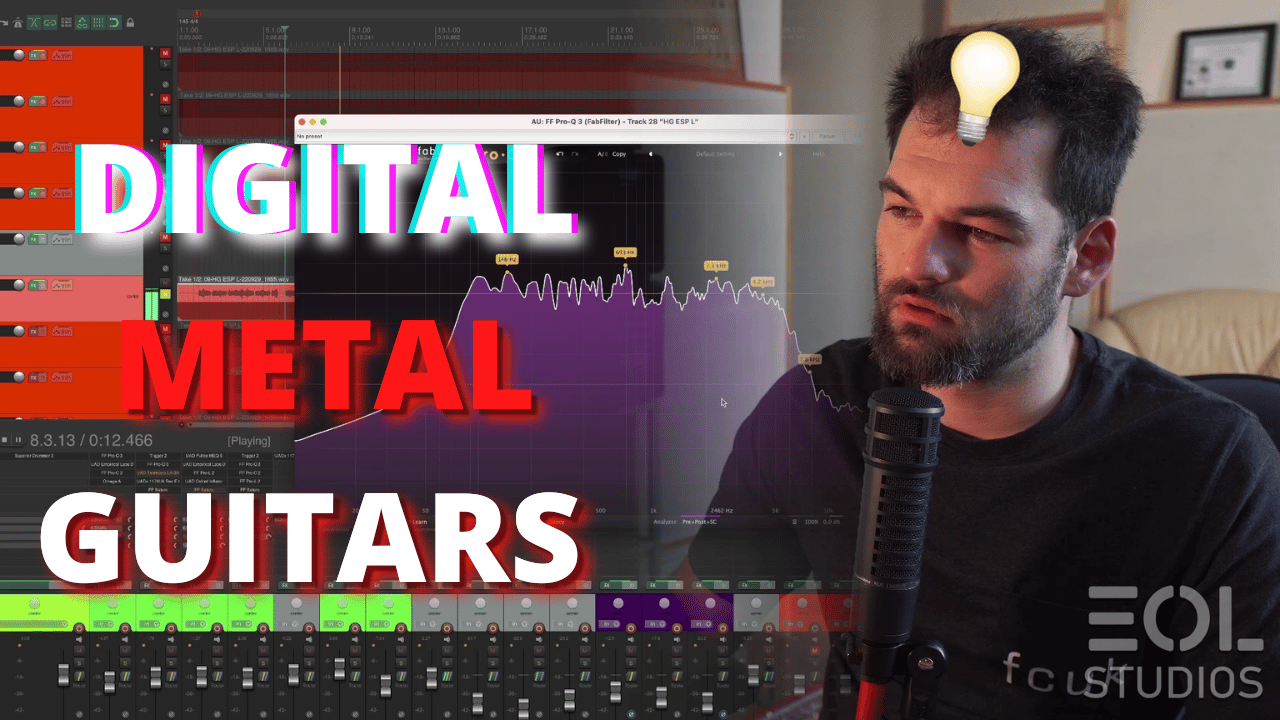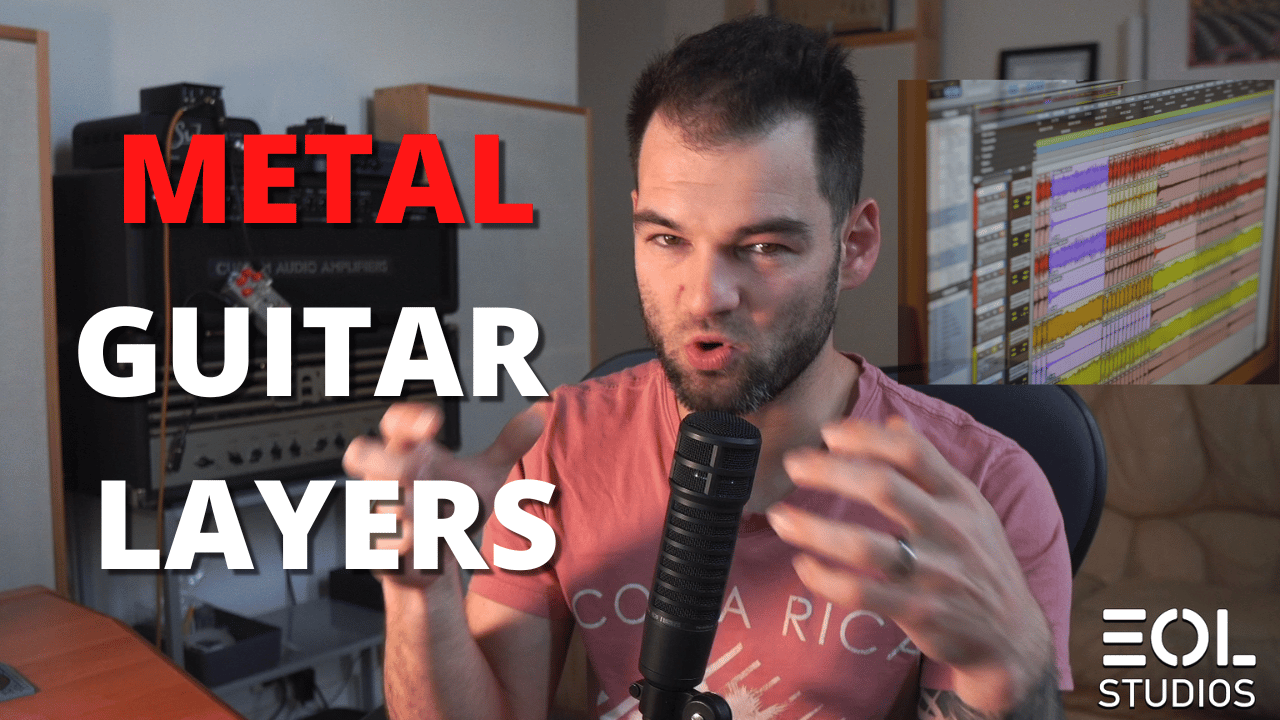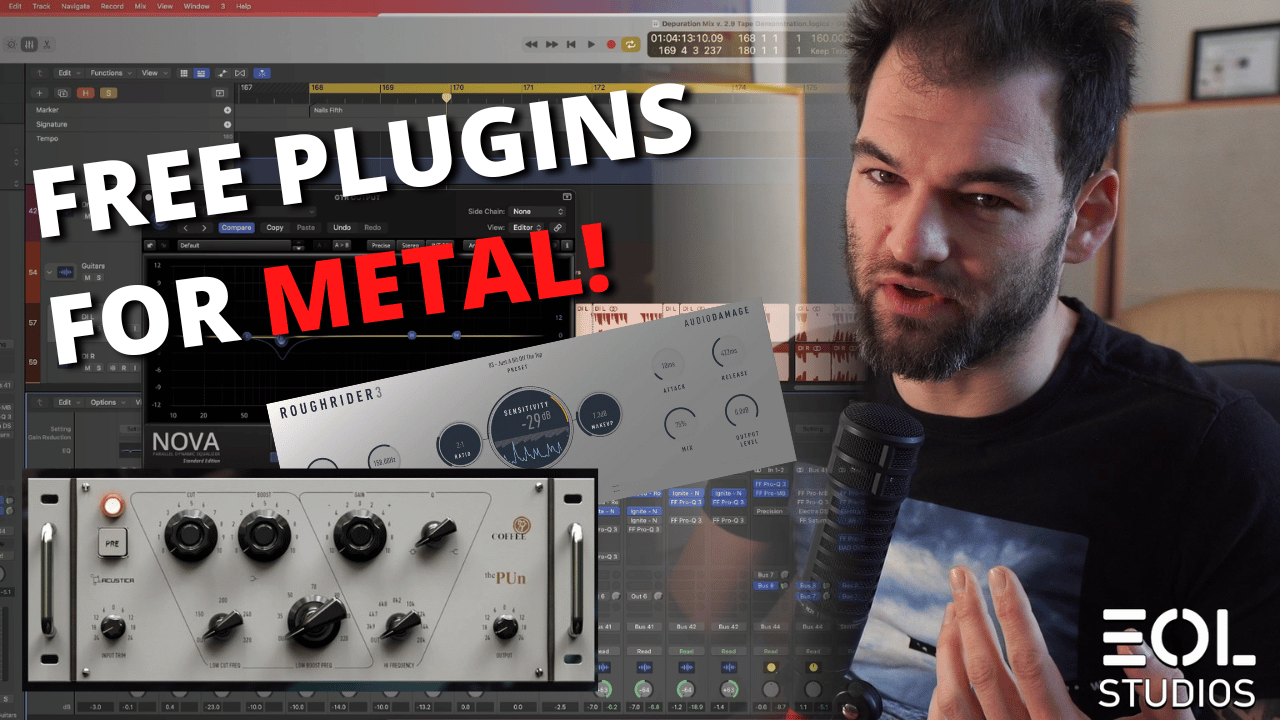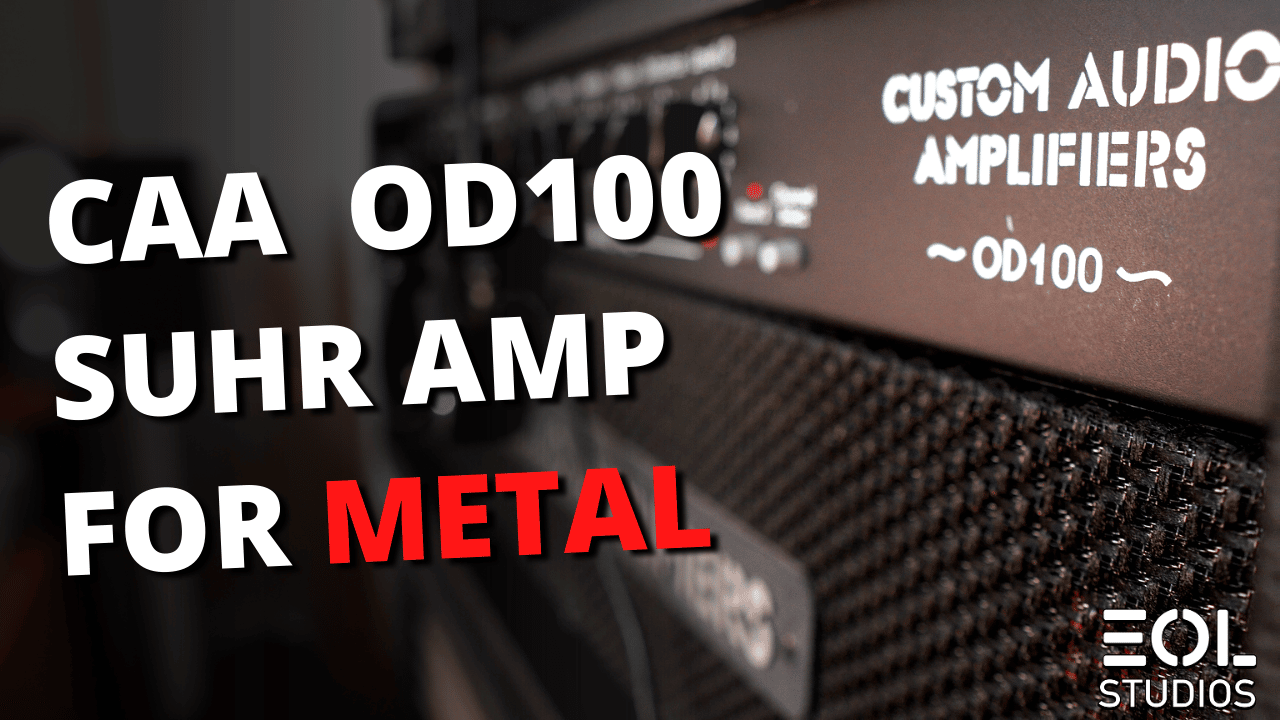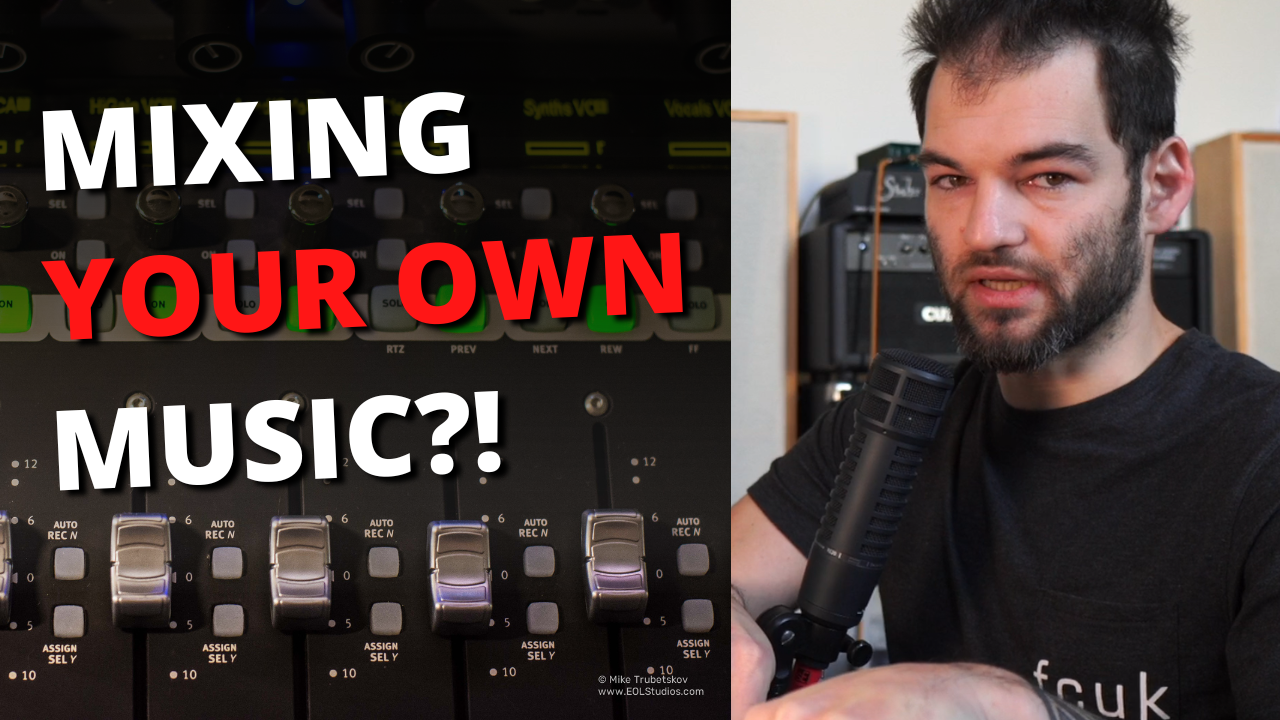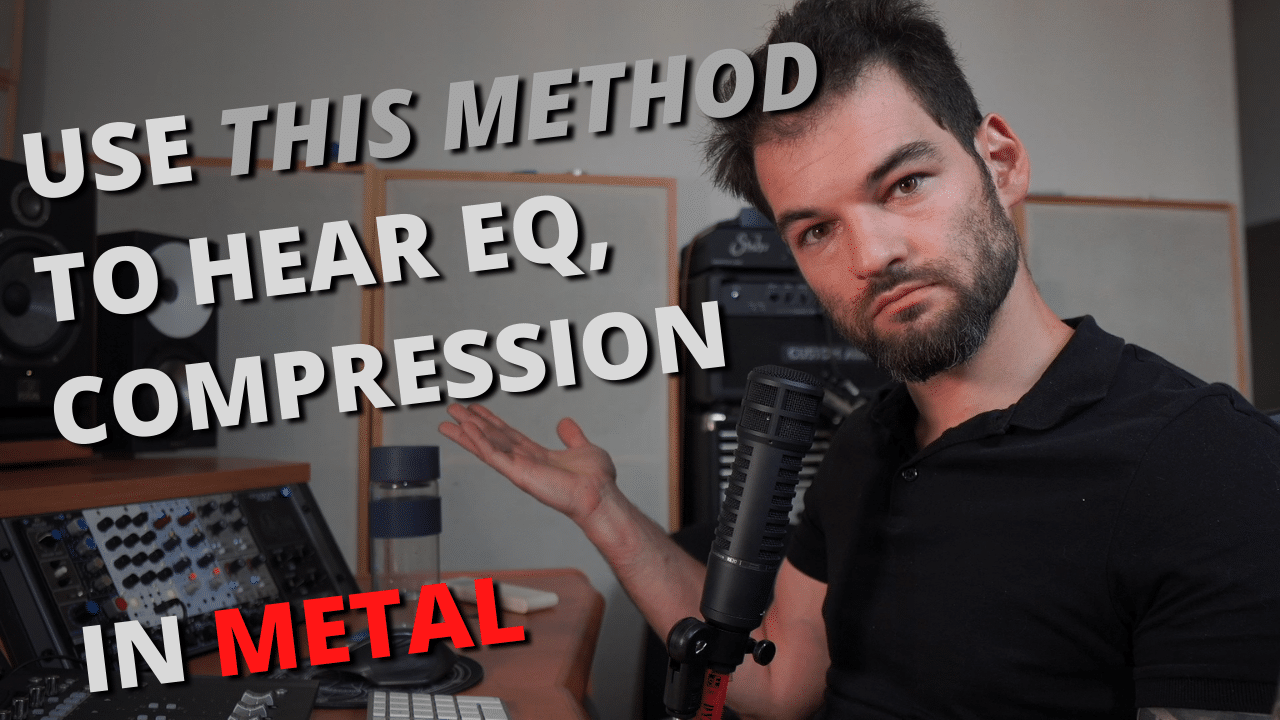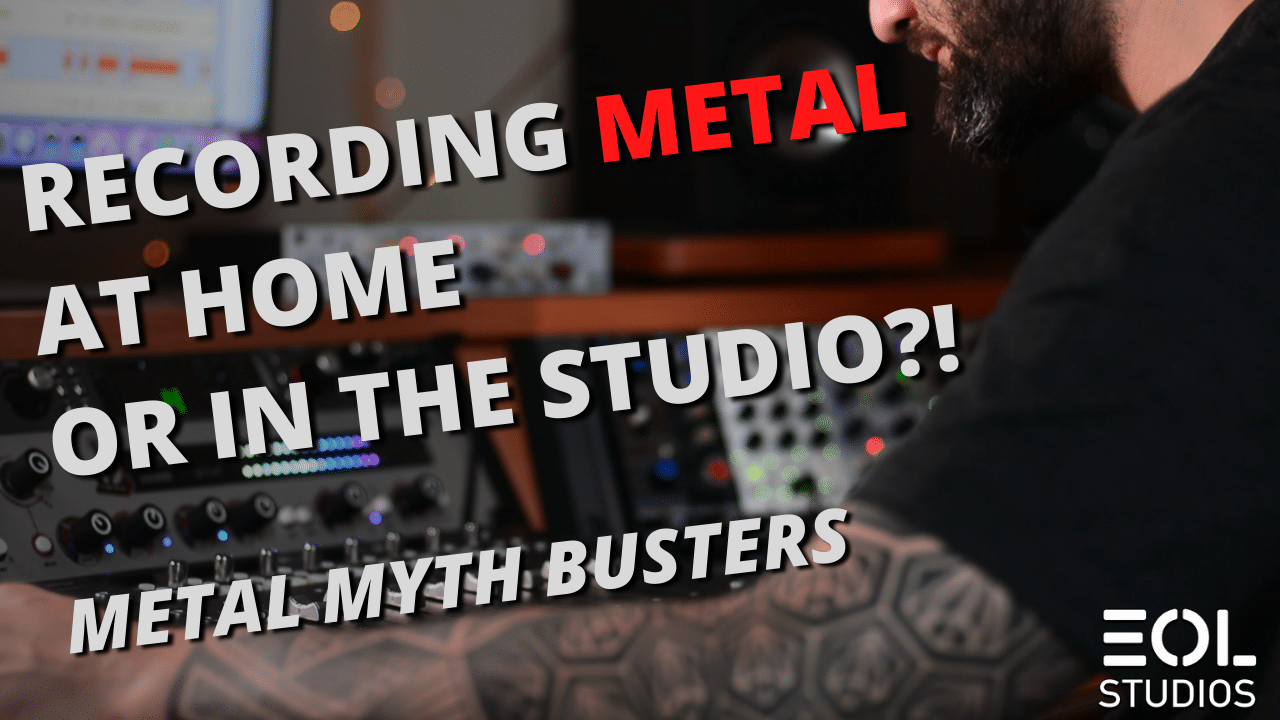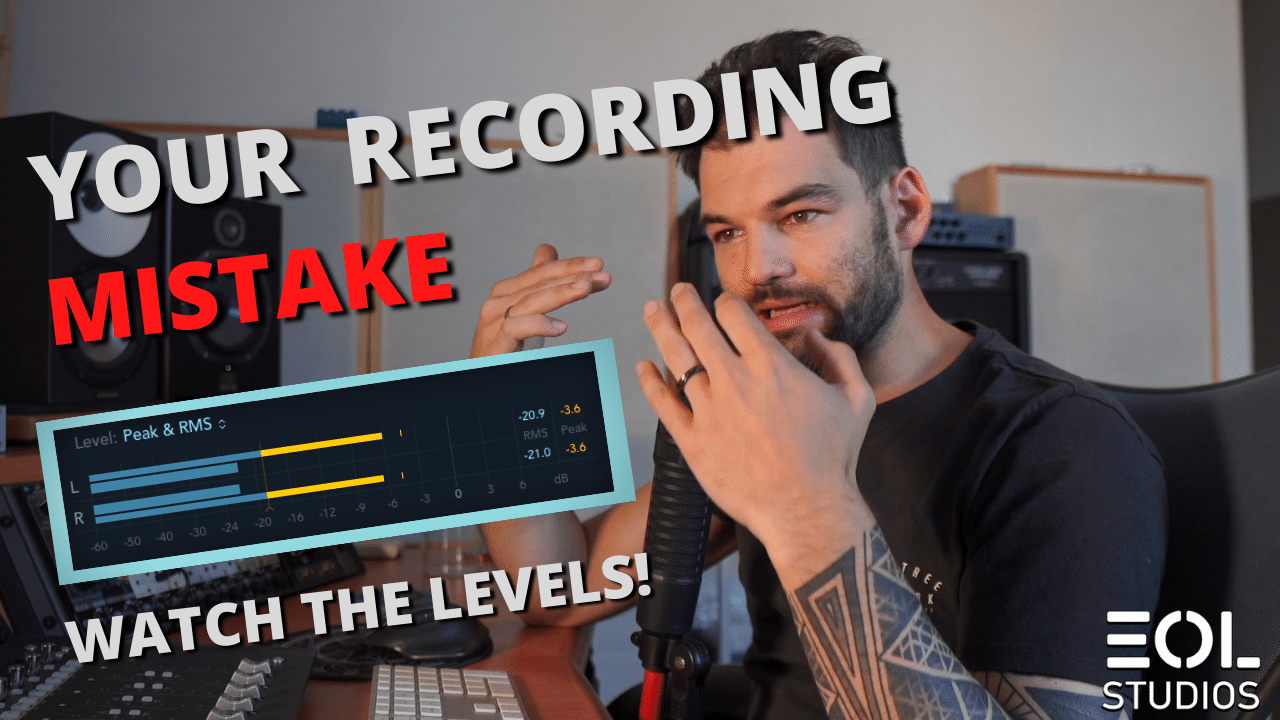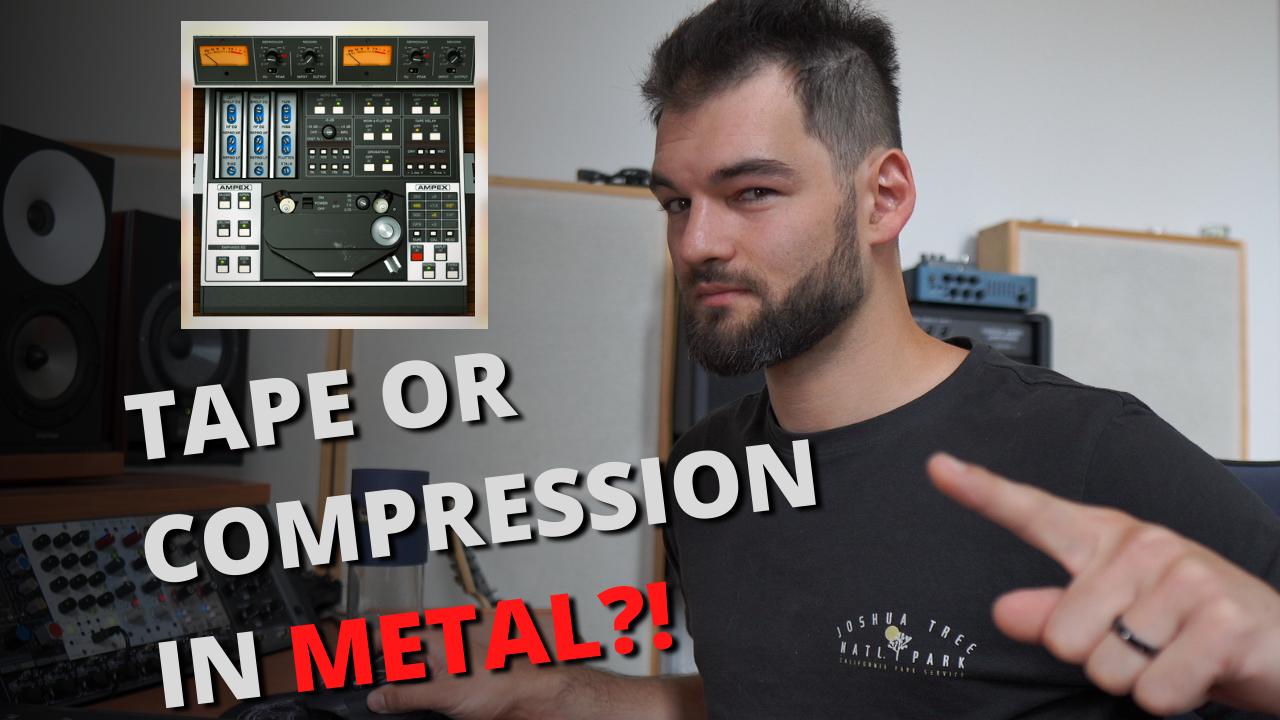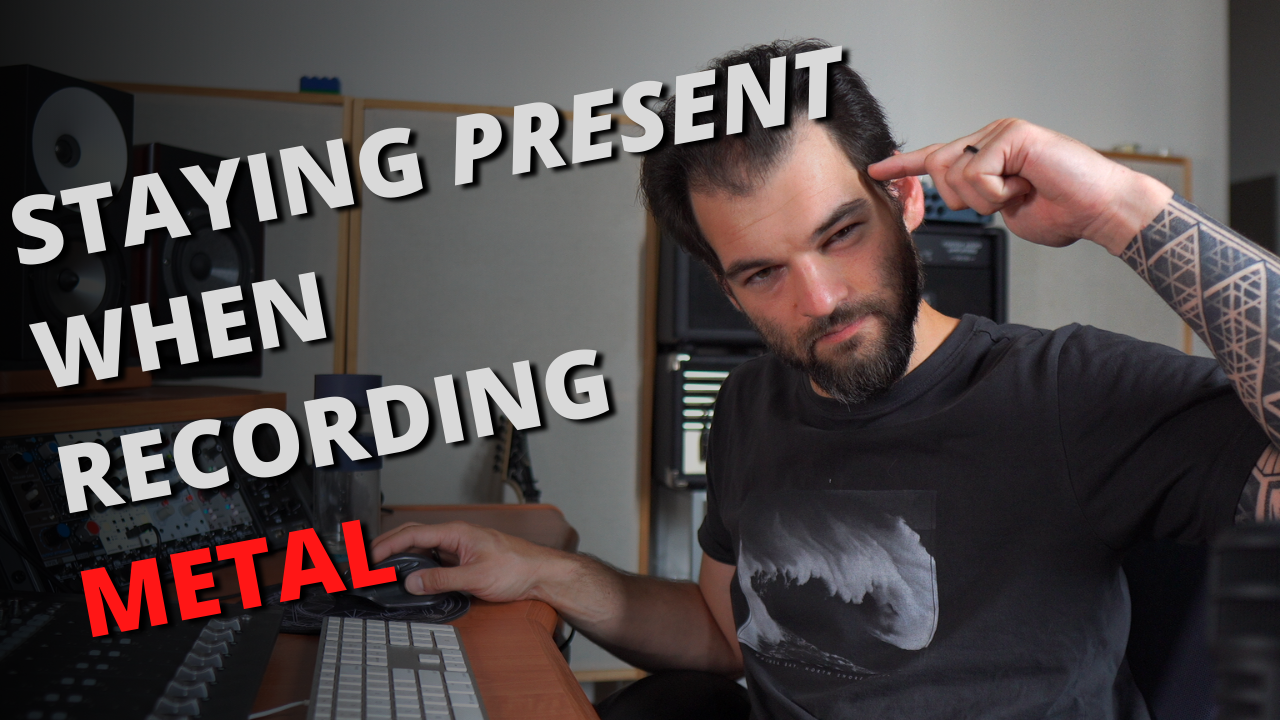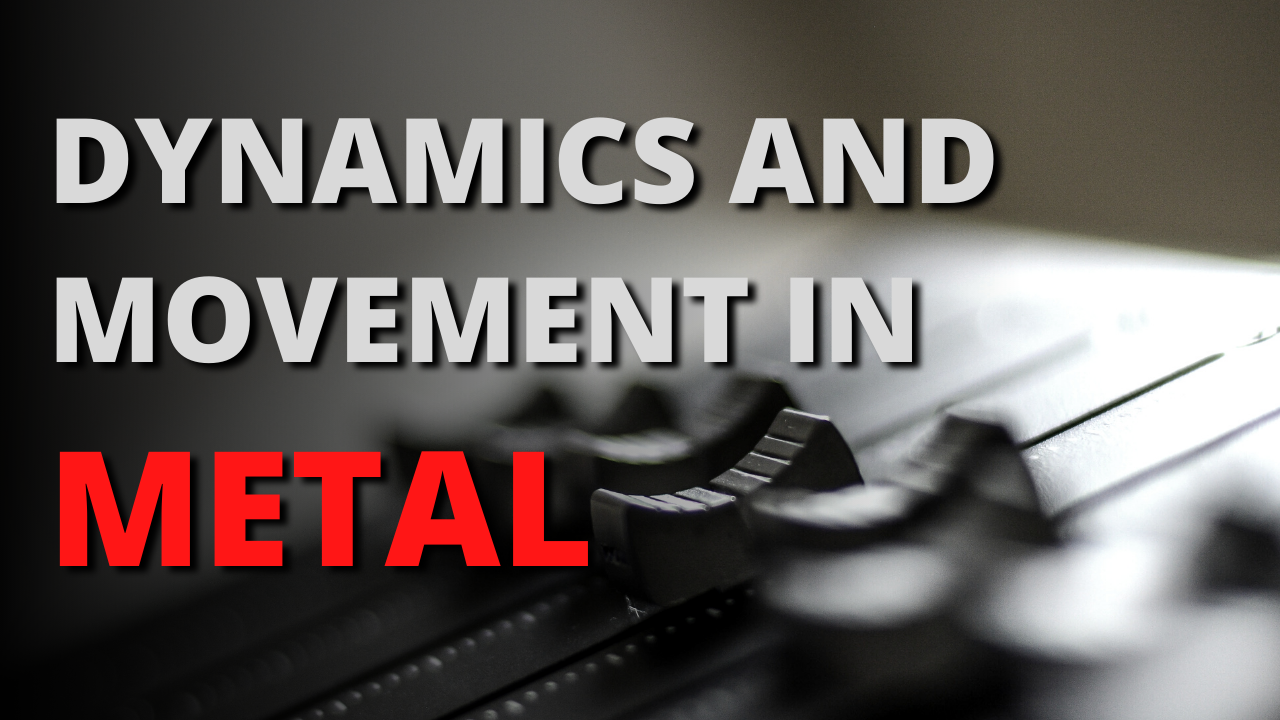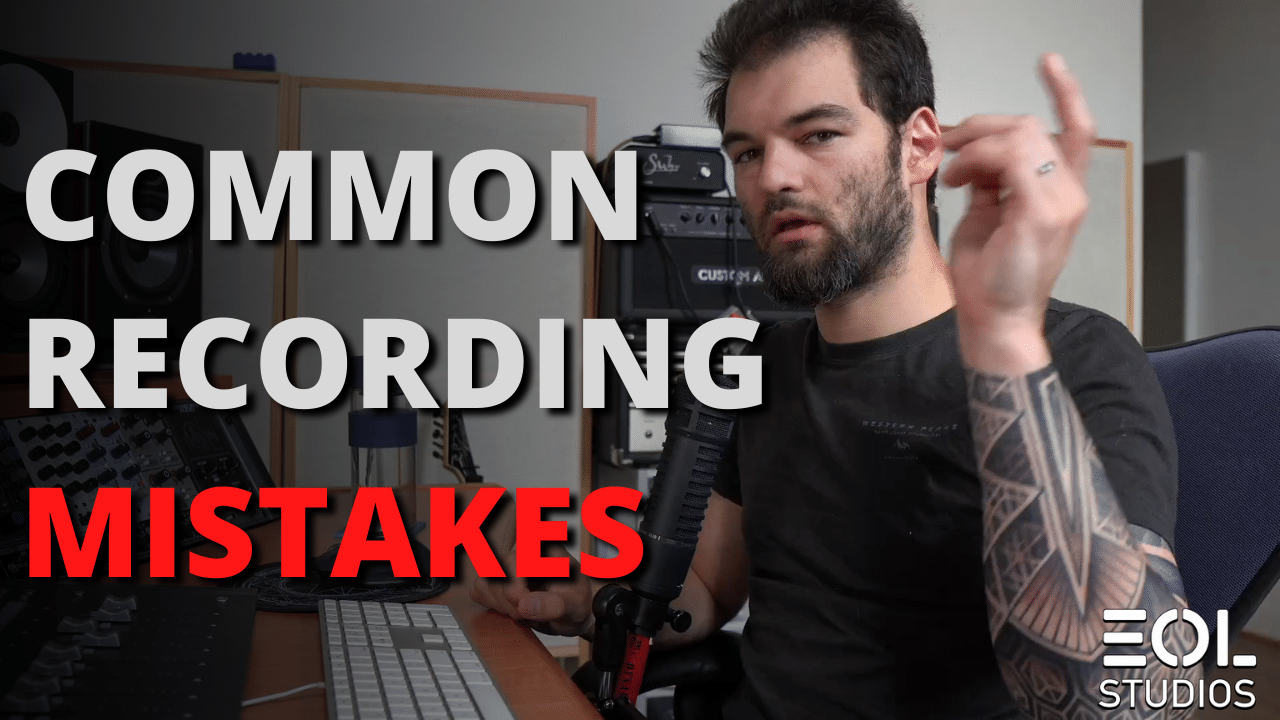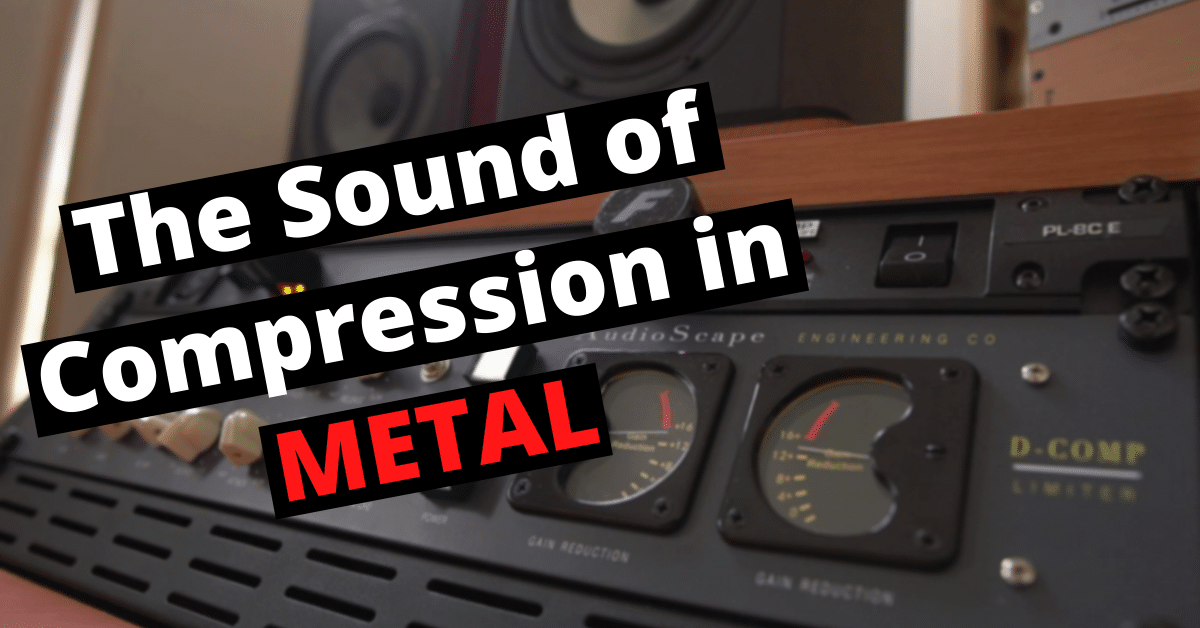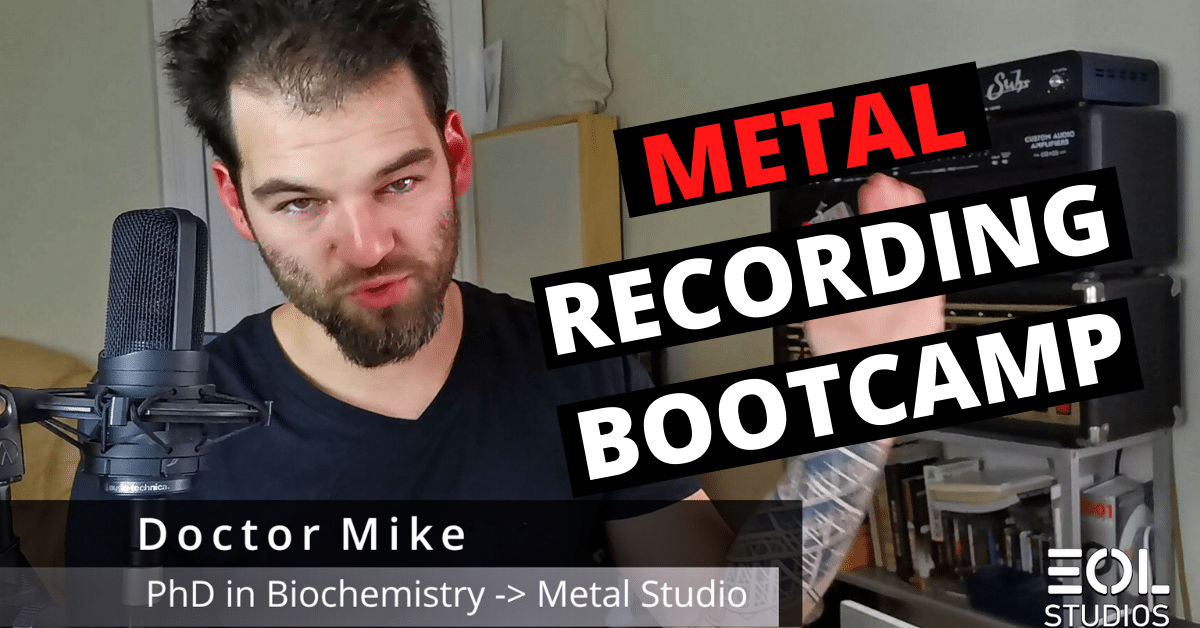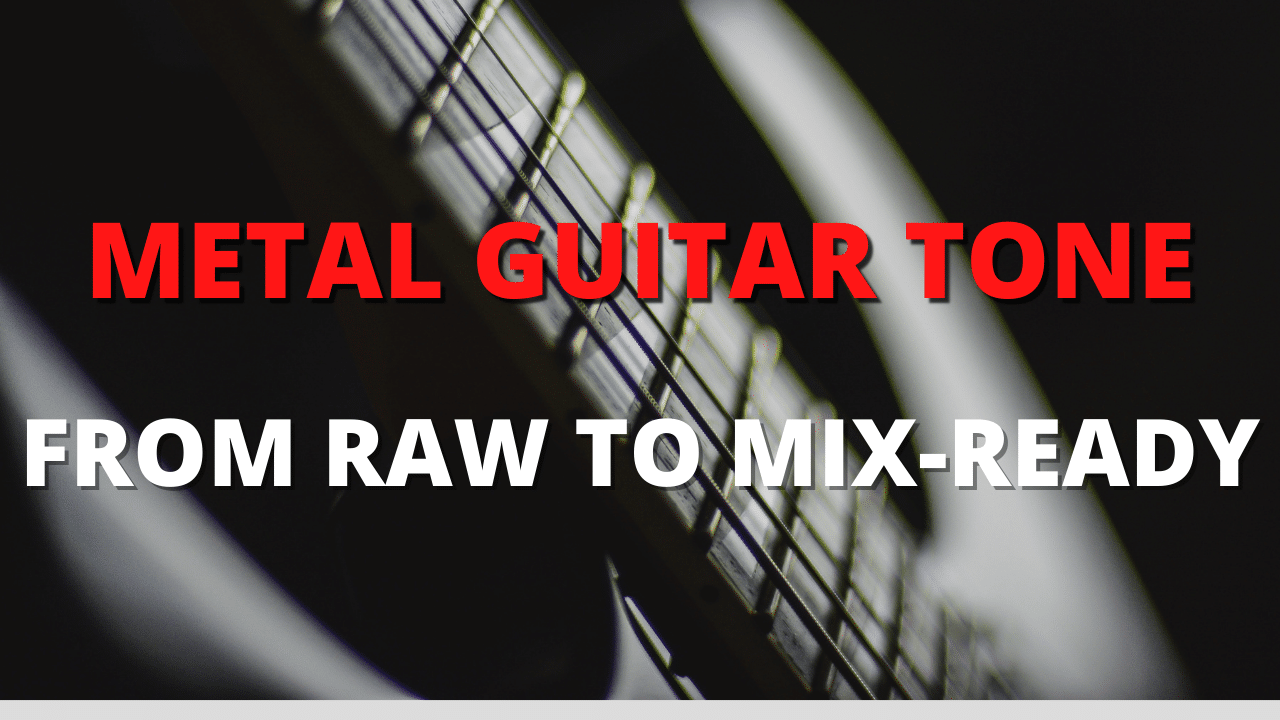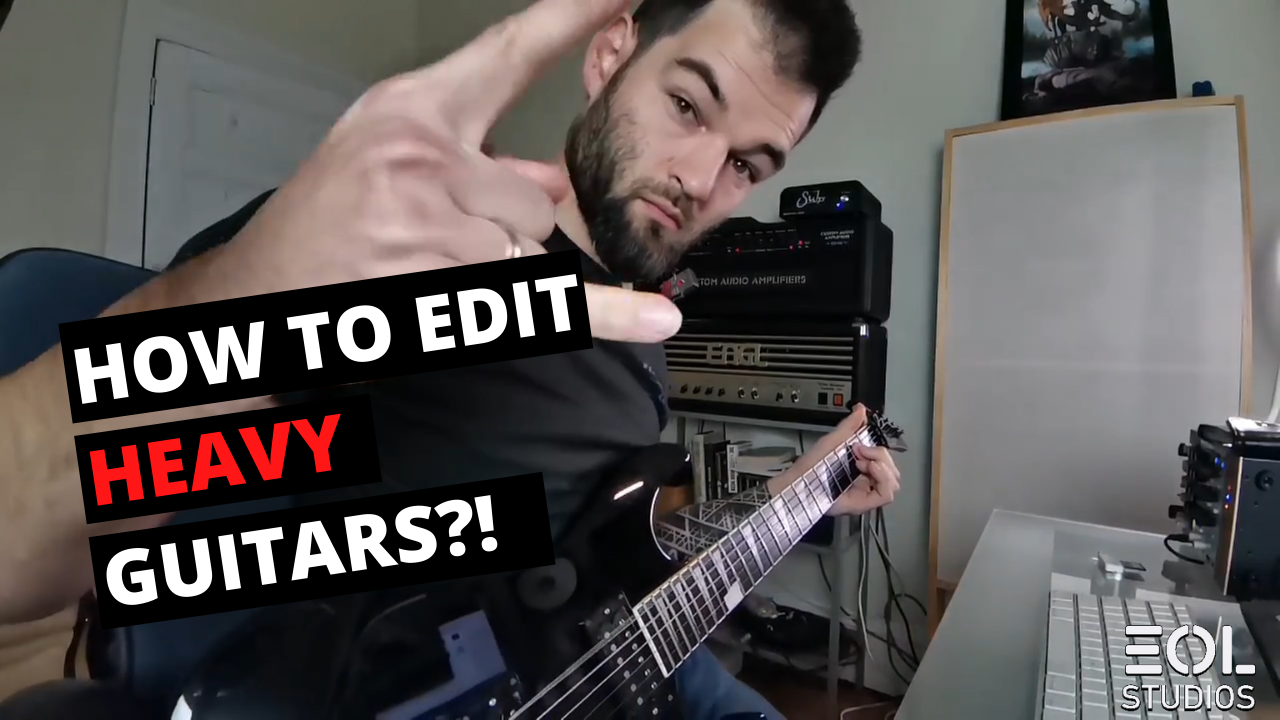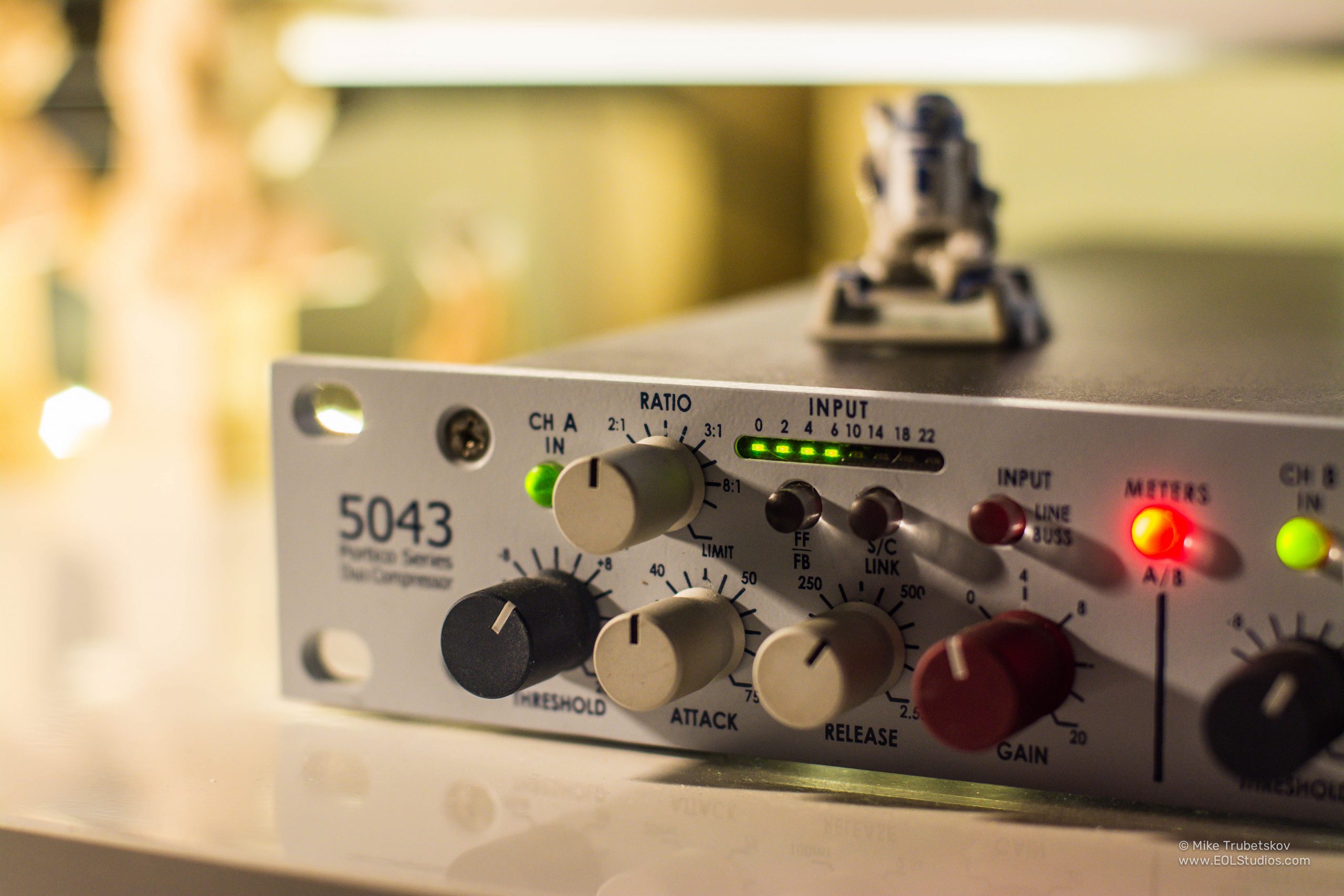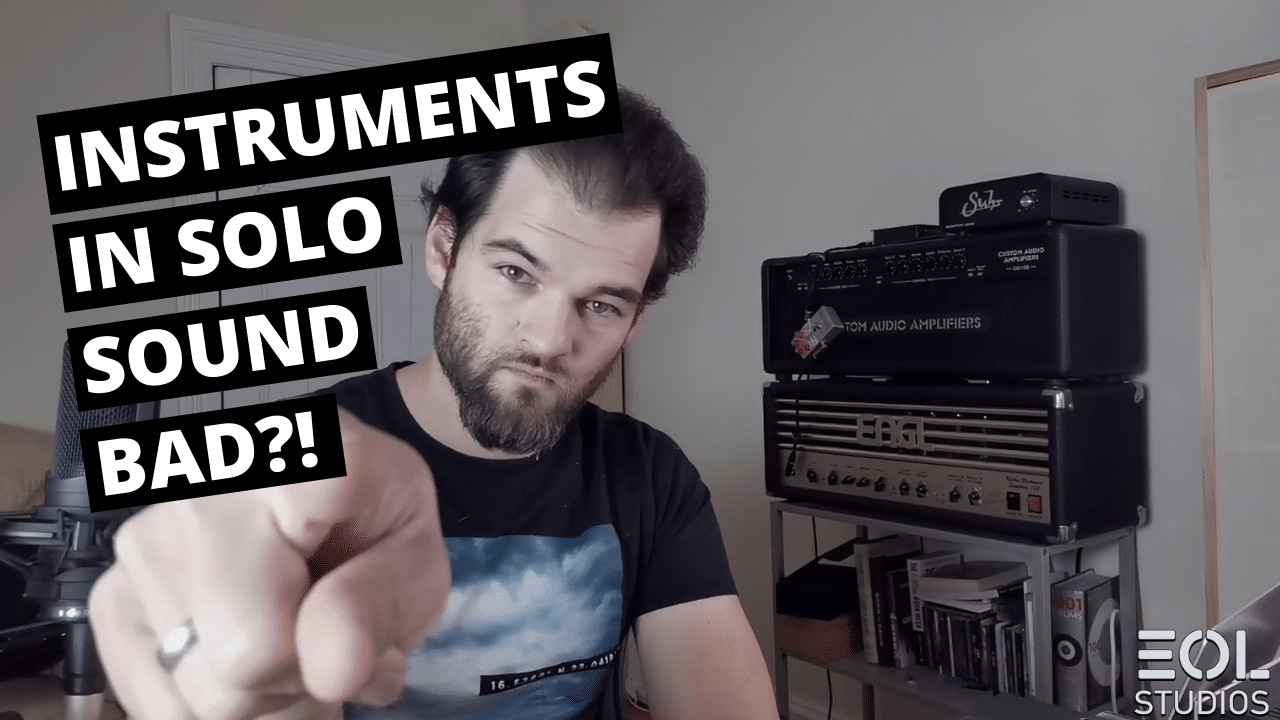Some of you may laugh at the idea of Dolby Atmos Metal Mixing, or just not see any value in it. In this video, I provide a direct comparison between Atmos Mix and Stereo Mix for a Metal song (Band: The Archanan – Resonance), and then explain what benefits and value did Dolby Atmos bring to the table. Let me know what you think of the result!
Category: Music Production Tips
Blending Metal Guitar Amps – Avoid Thin Sound, Align Phase Properly when Mixing Metal Guitar
Avoid phase issues when blending multiple guitar amps. In response to @metalprognosis
In this video, I show how you can use Eventide Precision Time Align in order to blend multiple guitar amps, cabs, IRs or plugins and avoid phase cancellation.
Unlock Epic Metalcore Drum Mixes in Seconds – Free Template for Reaper & Superior Drummer 3 Revealed. Reaper Metalcore Drums
Free Mix-Ready Template for Modern Metal and Metalcore Drums in Reaper with Superior Drummer 3. Reaper Metalcore Drums.
Download template here:
https://dashboard.mailerlite.com/forms/436702/88029942172877996/share
Use this template to make high-quality content faster!
Free plugins that you need to use the template:
Ignite Amps PTEq-x [https://www.igniteamps.com/#pteq-x]
Valhalla Supermassive [https://valhalladsp.com/shop/reverb/v…]
Softube Saturation Knob [https://www.softube.com/saturationkno…]
D16 Frontier Limiter [https://d16.pl/frontier]
Audio Damage Rough Rider 3 [https://www.audiodamage.com/pages/fre…]
Gclip [https://www.gvst.co.uk/gclip.htm]
MJUCR Klangheim [https://klanghelm.com/contents/produc…]
Brainworx Bx Subfilter [https://www.plugin-alliance.com/en/pr…]
Success in Modern Metal
If you want to succeed in the supersaturated modern metal market, you need to stand out.
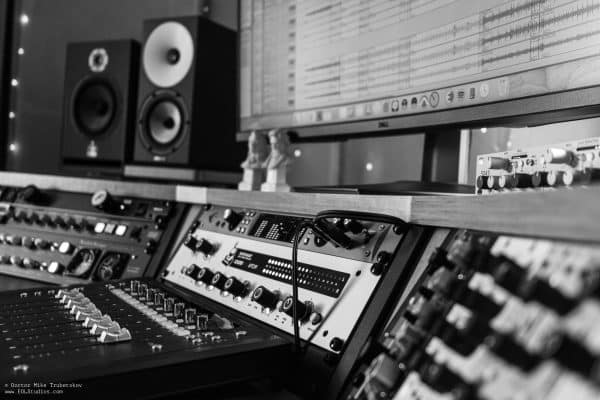
Here are a few principles that you may implement based on my lasting experience of producing bands and my own music.
💡Standing out is a very fine balance between fitting the pocket of the market and differing enough just to push its boundaries
💡Hence, using JUST your authentic ideas without exploring what is popular and WHY is a dangerous idea. This may drive your music simply irrelevant.
💡At the same time, mimicking popular trends and creating a mix-and-match of various sonic trends just for the sake of it would not display your authenticity, and your listener would not connect to it at best.
I suggest the following strategies when writing new music and thinking about its future success in the market:
✅ Explore what is new and trending in a similar heavy style to yours. Super important to follow the trends and understand WHY these songs are in high demand. Break down their stylistic elements and feel.
✅ Then, write music sincerely and authentically, project your message fully, without restrictions.
✅ And then, carve that message stylistically based on the trends that you explored earlier and which FIT its atmosphere (sounds, samples, arrangement, layers, grooves)
✅ It also make sense to stand out with your sound and with your mix – with the similar principle. Fitting the pocket and bending it just a bit. One of the proven strategies for me is to capture unique drum samples on the recording day and use them aggressively for sampled yet unique and real sound.
Success in Modern Metal.
What makes Modern Metal Band Sound Modern? Recording, Production, Guitar Tone, and Mixing Aspects
If you as a Modern Metal Band or Musician looking to push the edge of Modern Music, I break down the key takeaways of how Modern Metal is different from traditional Heavy Genre, why its sound is so hard to achieve, and how you can move forward towards better Modern Songs! Featuring music by Make Them Suffer, Currents, Into the Vein, Elysion, Darko US, and more.
Learning Compression – Mixing Metalcore Drums, Modern Metal Drums with 1176, Fabfilter Pro-C2, Distressor
Many of you are struggling to understand compression when mixing metalcore drums, modern metal drums, and deathcore drums. And I am still learning and adjusting to the modern super-compressed landscape, too!
In this video, walk through the session with me where we mixed programmed modern metal drums and learn compression principles, why and how with 1176, Distressor, Fabfillter Pro-C2, Kush Audio. Serial and Parallel Compression explained, too.
Here’s How to Get a SMASHED Modern Metal / Metalcore Mix That Won’t Sound Amateur
If you want your modern metal / metalcore mix to sound smashed, you may be easily pushing it too hard, losing punch and introducing unwanted distortion.
In this video, I will show you how to use series of limiters and clippers to retain huge loudness and energy of your modern metal mix, yet sound bigger and clearer.
How To Layer Synths for FAT Modern Metal Guitar Riff Tone – Metal Production and Mixing Tutorial! Metal Synth Guitar
How To Layer Synths for FAT Modern Metal Guitar Riff Tone – Metal Production and Mixing Tutorial for Metal Synth Guitar!
Lots of Modern Metal, Metalcore, Deathcore Productions and Mixes use Synths for thickening and fattening the Guitar Riffs. In this video, I show one of the approaches for Synth Layering, how to achieve good Synth Tones that Complement Modern Metal Guitar Riffs, and which Riff to choose!
What is the DIFFERENCE that Guitar Cab IR Impulse Response makes to the Metal Guitar Tone?
If you ever wondered, what’s the impact of Metal Guitar Cab IR on your heavy tone, and what cabinet impulse response actually changes in your sound, this video is for you.
I perform a scientific level-matched test of 2 different metal guitar amps into a single guitar cab IR Impulse Response. I then change this into using the same guitar amp and changing guitar cab IR 3 times.
The difference is stunning and explains a lot! Multitracks from www.tight-sound.site (not affiliated)
Make Believe EQ: MBEQ – an Alternative EQ Plugin for Fabfilter Pro-Q3?
Make Believe EQ – MBEQ. In this video, I took a deep dive in the new offering of Make Believe Audio. I compare MBEQ with Fabfilter, and discuss applications and limitations of both. I explore the hotkey workflow of MBEQ, the Sauce colour function, compare the Notch and the overall workflow of MBEQ vs Fabfilter.
GET IT RIGHT! Mixing Metal Guitars – Axe FX 2. Full Sounding Digital Tone!
Mixing Metal Guitars with Axe FX 2 in Reaper – Full Sounding Digital Tone. In this video, I do a deep dive into the optimal plugin chain, EQ, compression, multiband compression, saturation to get your modern digital metal guitars cut through the dense mix. Using a free mixing multitracks from tight-sound.site (not affiliated) Hope that you enjoy!
Metal Guitar Layers – Make It HUGE! Reasons to Record Harmonies, Doubles, and Quads
In this video, I talk about Metal Guitar Layers, and how to record these for Modern Metal Guitars. – Reasons to record harmonies and doubles. – Layers for Rhythms. Harmonies. Vibrancy. Quads – Layers for Leads
▶ Download The Overcoming Project Free Mixing Multitracks: https://mailchi.mp/ac12b96bbb84/top-multitracks
▶ Subscribe to Mailchimp to never miss content: http://eepurl.com/gw0yIz
▶ Schedule a free first coaching session with me: https://eolstudios.as.me/free-consultation
▶ EOL Studios Website and Show Reel: http://EOLStudios.com/
▶ EOL Studios Facebook: https://www.facebook.com/EOLStudios/
▶ EOL Studios Instagram: https://www.instagram.com/eol_studios/
7 Great Free Plugins for Recording and Mixing Metal
7 Great Free Plugins for Recording and Mixing Metal. My selection and plugins that I use on daily basis in my productions and mixes.
These plugins cover Guitar, EQ, Compression and Saturation for you. I am not affiliated with any of the companies!
1. Amped Roots Free Guitar Amp Sim: https://ml-sound-lab.com/products/amp…
2. Ignite NadIR free Impulse Response Loader: https://www.igniteamps.com/
3. IK Multimedia Comprexxor (Free until September 20th, 2022): https://www.ikmultimedia.com/news/?it…
4. Audio Damage RoughRider 3: https://www.audiodamage.com/pages/fre…
5. TDR Nova EQ: https://www.tokyodawn.net/tdr-nova/
6. Acustica Audio Coffee the PUn: https://www.acustica-audio.com/pages/…
7. Softube Saturation Knob: https://www.softube.com/saturationknob
Custom Audio Amplifiers Metal CAA OD100 | CAA Suhr Amp Review | Lasse Lammert DI Reamp
CAA OD100 Custom Audio Amplifiers Metal Guitar Amp Reamp and Review. Using Lasse Lammert DIs, Pepper’s Pedals Dirty Tree, Suhr Reactive Load, CAPI VP26 mic pre.
Mixing Your Own Music. Lessons that I learned in Metal.
Mixing Your Own Music is hard – be it Metal, Rock or any other genre. In this video, I share my recent experience when mixing The Overcoming Project and some insights that can help you on your path!
P.S. Pre-save the track here! https://distrokid.com/hyperfollow/the…
How To Hear Compression, EQ and Saturation in Your Metal Recording and Mix – Guitars, Drums, Bass, Vocals
A simple method that allows you to better hear compression, EQ, saturation in your Heavy Metal Recording and Mix – Guitars, Drums, Bass, Vocals. Push things to the extreme, level match and listen to the results while changing one parameter at a time.
Recording Metal Home Studio vs. Actual Studio – Which is Better?
Recording Metal in the Studio vs. at Home – Which is Better?
Let’s break down one of the common recording myths – Recording Metal at Home is just as good as Recording Metal in the Studio. In this video, I talk about the not so obvious advantages of recording your heavy music in the studio with a producer, and what value you could get from it.
Keywords: Recording Metal Home Studio
Recording Metal Tutorial. Gain Staging and Levels.
Recording Metal Tutorial. Setting up Gain Staging and Levels while Recording your Heavy Metal Guitars, Drums, Bass and Vocals at Home Studio – Makes it or Breaks it!
Find out how different is the sound for correct and incorrect gain staging within Logic, Cubase, Pro Tools, Reaper, or any other DAW, and how to set it up correctly.
Mixing Metal Tutorial. Compression vs Clipping – Doctor Mike Worships Tape Over Compression
Mixing Metal Tutorial. Compression is a key way to make instruments powerful and fit in the Heavy Metal Mix. Overcompression, however can make instruments sound thin, too pushed and, frankly, boring.
I discuss unique ways to retain dynamics and still keep Metal Guitars, Drums and Bass super powerful in the Mix. By using Tape, Saturation and Transformer Clipping.
Staying Present when Recording Metal
Staying Present and Mindful when Recording Metal. It’s all about the mindset. The state of mind that you are in during the recording session in the studio or at home, dictates the end result. The way you feel translates into your guitar, bass, drums and vocal recording, and even mixes. Consider tuning your mind into your music and not losing the big picture, and the results will follow.
Adding Dynamics and Movement to Heavy Metal Mixes – Automation Mixing Tutorial
Adding Dynamics and Movement to Heavy Metal Mixes. Don’t end up with static mixes that lose the attention of your listener! Create movement with section automation and VCA fader automation. Mixing Tutorial, Tips and Tricks by Doctor Mike – Metal.
Analog Outboard Gear For Mixing Metal Mix Bus
In this video, I show my Analog Mix Bus Chain for Mixing a Metal Track. Featuring Louder Than Liftoff Silver Bullet, Rupert Neve 5043 Compressor, Rupert Neve 542 Tape Emulator. How to Mix Metal with outboard gear.
Recording Metal at Home – Common Mistakes
Common mistakes when recording Heavy Metal Guitars, Bass, Drums, Vocals at Home Studio. I talk about my direct experience receiving multitrack for mixing, and ways to prevent these mistakes from happening! Inconsistent levels, bad doubling, too complicated layers and not finding your sounds. If this sounds like you – check this video out.
3 Things That Will Improve Your Heavy Metal Recordings
I. Guitar Pro for Pre-Production
II. Tightness is More Than Raw Sound
III. A Tale About Originality
The Sound of Compression in Metal. Mixing Metal Compressor
Compression is an integral part of any Heavy Rock and Metal Recording and Mix.
But how does it actually sound?
In this video, I provide multiple examples of Compression in application to Mixing Heavy Metal Drums and Guitar. I use digital and analog compression – plugins by Universal Audio, Kush Audio and Acustica Audio, as well as my Audioscape D-Comp. SSL Bus Compressor, 1176, API 2500, Kush Novatron, Teletronix LA-3A, Fairchild 670.
Which one do you like the most and the least?
⚡ Metal Recording Bootcamp ⚡
Still not getting those Modern Metal tones right, even in an abundance of Plugins and Access to Modern Recording Equipment?
I will help you by examining your exact challenges and solving these with you in real time, via screen-share Recording Bootcamp Sessions.
Sign up below.
▶ Schedule a free first coaching session with me: https://eolstudios.as.me/free-consultation
▶ EOL Studios Facebook: https://www.facebook.com/EOLStudios/
▶ EOL Studios Instagram: https://www.instagram.com/eol_studios/
Tags: Recording Heavy Metal Guitar, Bass, Drums, Vocals. Mixing Metal at Home Studio. Metal Arrangement, Production, Producer. Getting Modern Tones with Get Good Drums, Nail the Mix, Nolly, Superior Drummer, Neural DSP, Ibanez, Jackson, Engl, Mesa Boogie, Peavey, ESP, and so on.
METAL GUITAR TONE. From RAW to Mix-Ready. Recording Metal Guitar Sound.
Recording Metal Guitar. How to get Heavy and Crushing Metal Guitar Tone starting from Guitar DI and into Mix-Ready Sound. I cover Cab Impulse Response IR Selection, Amp tone block, corrective and colouring EQ, dynamic EQ, multiband EQ, saturation, compression and lack of it, guitar reverb, and how to fit this all into the mix to obtain heavy, clean and crushing Metal Guitar Sound and Tones.
Metal Guitar Editing: How To Edit Metal Guitars
Metal Guitar Editing. I show how simple editing should be, and how fast you can get tight sounding heavy guitars (with decent performance in the first place). Manual editing, no auto-aligning or flex-editing needed. Edit your guitars based on DI tracks.
Compression and Over-Compression in Modern Heavy Music Production
Written by Doctor Mike – Rock and Metal Producer, Guitarist, and Mix Engineer at EOL Studios. Published in a collaboration with Sonimus Audio – https://sonimus.com/blog/info/compression-modern-heavy-music-production.html
Compression in Heavy Rock and Metal has become a cornerstone of Modern Music Production Techniques. As mixes become denser and denser and each instrument fights for its space in the Heavy mix, they require more and more compression. On the other hand, if compression is applied incorrectly or excessively, it becomes incredibly easy to destroy the dynamics of mix elements and just come to blatant and static mixes that don’t sound exciting to the listener.
In this article, I would like to focus on some ways to prevent over-compression and loss of dynamics and still create the desired effect of heavy compression for a firm and solid modern sound.
I. The selection of Attack and Release times.
There is so much confusion about choosing the correct Attack and Release settings for compression. I can only suggest that this comes with experience, and experimenting and listening to your choices and their impact on the final sound will go a long way to discovering your take on compression.
There is, however, a simplistic approach to finding the Attack and Release settings suitable for the material, and that has been developed by Michael Stavrou in Mixing With Your Mind Book. In short, one calls for extreme compression settings to really hear their effect. Set up your ratio to the maximum. Attack and Release to the shortest. Adjust the Threshold so that you get a healthy amount of gain reduction. Now, start slowing the Attack down, and listen to the transient. Find the setting where the transient comes through. Next, adjust the Release time to suit the tempo of the chosen track.
II. Common Attack and Release Settings.
This approach allows to discover the compressor timing settings that would suit your musical material and leave the transient less affected, hence creating less of unwanted compression artefacts. Find some common compressor timing settings below applicable to Heavy material.
Drum Overheads – Slow Attack, Slow Release. Smooth out and glue drums together, without impacting the attack envelope.
Kick – Slow to Medium Attack, Medium to Fast Release, depending on the material. Leave the attack intact and adjust the release to not interfere with the next note. This varies depending on the part, for instance, a drum part consisting of predominately 16th note double kicks would require a faster release than 4th or 8th notes.
Snare – Slow Attack, Medium to Fast Release. Snare compression may be a bit tricky, and would largely depend on chosen production style. Fast release time would provide a more aggressive punch, medium release times would give more sustain to the snare. Slow attack is preferred to leave the transient intact, however, this depends on how the drum was recorded in the first place.
Toms – Medium to Fast Attack, Medium to Fast Release. Toms are compressed rather aggressively to cut through a dense mix.
Drum Parallel Compression – Fast Attack, Fast Release. Settings are adjusted to match the tempo of the track.
Bass – Fast Attack, Fast Release. Bass is one of the most dynamic instruments in the mix, and it hence requires a significant level of evening to stay prominent. Attack may remain as fast as possible until the distortion artifacts occur.
Guitar – None! Although many producers prefer the compressed guitar sound with slow Attack and fast Release, I would recommend against it since heavily distorted guitar is already significantly compressed by definition. I would recommend using extra saturation layers instead, see below.
Vocals – Medium to Fast Attack, Medium to Fast Release. For heavy screams or growls, aggressive compressor settings suit the material, hence fast attack and release. For cleaner singing, you may want to explore the infamous Dr. Pepper settings, with Medium Attack and relatively Fast Release.
III. Compression in Series versus a single Compressor.
Most of the Modern Rock and Metal Producers work in the box and rely on plugins heavily, and I have been no different until recently. The important thing of note is that outboard analog compressors are a little more transparent and forgiving in general, and hence allow more gain reduction to be done (up to 10 dB!) without providing excessive artefacts. Digital plugins aim to emulate this behaviour, and we’ve been fortunate enough to live in the era where these software products come closer and closer the their analog brothers, and sometimes even exceed these in the state of convenience, recallability, and the sound itself once not trying to emulate a specific piece of gear.
As a general rule of thumb, however, I recommend avoiding pushing plugins to their extremes especially if the goal is to achieve clarity and transparency. The answer to firm and solid compressed sound desired by heavy musicians and producers then is – serial compression.
Instead of using a single instance of a plugin and taking down 10 dB of the signal, consider going milder with that original compressor, maybe 3-4 dB of GR, and then using a different model with a different sound, complementary to the first compressor, taking additional 2-3 dB. This results in a cohesive and diverse sound that is still firmly compressed, yet remain more transparent. The second compressor settings are also likely to be milder, letting the transient through and emphasizing the action of the first compressor as well.
Few examples here. Once I compress the individual microphones for my Kick drum with the settings pictured above, I next travel to the Kick Buss. I insert an additional compressor of a different style (the modern metal genre craves for SSL-style compressors) and tweak its settings to the program material. Normally slow attack and fast release work very well for emphasizing aggression, and slow attack and medium release for additional punch and sustain. I approach snare similarly.
For Bass, I like to glue the buss together with a Fairchild-style medium or slow compression, adding thick harmonics and rich bottom end without impacting the attack already smoothened out on the previous step of compressing the individual tracks.
Vocals may benefit from a finishing polish of LA-2A or even API 2500-style compressor, taking out no more than 1 dB of gain for subtle evening and thickening.
Similarly, my mix bus itself goes through a series of hardware and software compressors, and that does quite a heavy lifting to the signal. I take out 2-3 dB of the mix bus with my Rupert Neve 5043, which then goes to Louder Than Liftoff Silver Bullet and Rupert neve 542 Tape Emulator for harmonic coloration and emphasis. Back into the box, I additionally compress the mix bus with API-style, SSL-style, or unique and transparent digital tools that further glue the mix together. The closer to the finish line, the less compression is required; I may barely move the needle of the final compressor in the chain and still hear a significant impact.
IV. Compression layering.
Additionally to serial compression, layering compression in parallel is a fantastic idea to thicken sounds up and create an aggressive feel to these, without destroying the original feel of the part.
One may get very creative on this stage, combining the flavours and unique action of all the software and hardware tools at hand to come up with a vibrant and strong combination of firm compressed signal.
I reach for 3-4 different parallel layers for drums, ranging from a classical 1176-style compression for grit and punch, as well as Neve-style glue and thickening for the entire drum kit, to very aggressive digital plugins on Kick, Snare and Toms only to let them cut through a dense mix.
I parallel compress the Bass, too, with 1176-style limiter acting very aggressively.
I started to parallel-compress the mix bus itself as well, strictly in the digital realm, blended subtly. This creates an additional layer of aggression, once again, without impacting mix transparency and fullness.
V. Multiband Compression and side-chain Compression.
A more utility-based approach is multiband compression, and that is a superior way to further clean things up in lieu of heavy compression. The approach is well applicable for instruments that are dynamic only in the specific frequency range. Heavy guitars are very prone to uncontrollable low end movement on the palm mutes. Bass guitar may move significantly in the sub-bass region. Vocals may have quite an uncontrollable low-mid and mid frequency range, prone to increased dynamics. All these instruments may additionally benefit from multiband compression on their buss, focusing on the problematic area and subtly evening it out without impacting the rest of the instrument. This provides more transparency, clarity, and control to the mix.
Finally, once one reaches the stage of mixing where all the instruments are incredibly dense and thick, it gets progressively more complex to let each instrument have its full space without compromises. Until recently, engineers didn’t have access to modern digital tools and hence had to carve room for instruments with the EQ, for instance, significantly high passing the additional lead guitars, synths, or extra vocals in order for these to sit in the mix nicely. As a result, the mix certainly felt balanced and rich, yet just these extra elements may have sounded thinner than desired.
We are blessed with technology in the modern days, and it gets infinitely easier to befriend the elements of the mix with multiband compression that is side-chained to the instrument of need.
For instance, vocals and guitars almost always fight for the common space in the mix – the midrange. Instead of trimming that midrange out and sacrificing the sonic character of one of the mix elements, one may perform the following trick.
Select a multiband compressor for the guitars. Create a band that sits in the conflicting midrange region. Side-chain it to the vocals. Set the attack and release to taste, so that the reduction is transparent. As a result, your guitars are going to become more “scooped” once vocals are active, leaving room for these and not interfering with the frequency distribution. However, once vocals are not present in the mix, the guitars return to their full-sounding state. The listener would appreciate both the massive guitar sound, and room for vocals where required.
Similar approaches are well applicable for synths in strings in heavy music that occur episodically and need to retain their power, as well as additional lead guitars – or any other element of the mix that is difficult to fit into a busy canvas.
VI. Conclusions.
As much as compression remains an area of music production that requires lots of experience from the producer to achieve transparent and solid results, the modern tools available at our disposal make the job easier and easier. By following the approaches described in this article, one would minimise the artefacts of over-compression and achieve massive and solid-sounding Modern Heavy Records with great deal of clarity and separation – a true staple of the Modern Sound.
Metal Myth Busters I. Instruments in the Mix Sound Bad in Solo?! Heavy Metal Recording, Mixing Tips
A common myth about mixing heavy rock and metal is that instruments in solo / isolation sound thin, brittle, or plain wrong, and only when combined they complement to each other. While it may be true to some extend (high pass filters, etc), I show that instruments need to sound big and full on their own, as well as combined together. Have a listen with me on my recent mixes for The Archanan, Sliimak, and The Overcoming Project.





